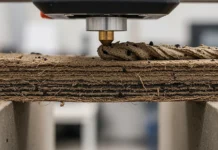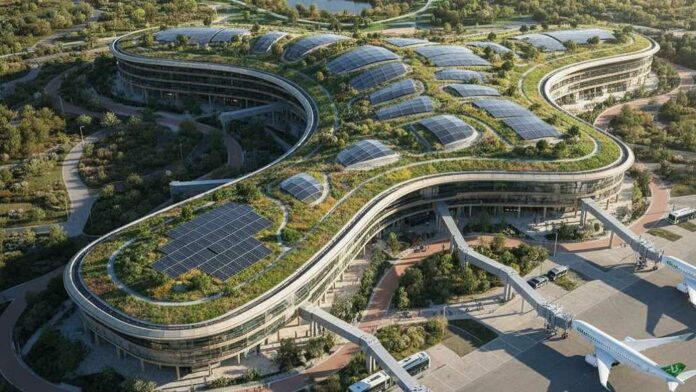Sustainable Terminal Design: Uniting Construction and Operations for Long-Term Impact
The convergence of sustainable design principles with terminal construction and operations represents a transformative approach to infrastructure development that addresses environmental stewardship, operational efficiency, and long-term economic viability simultaneously. Sustainable terminal design and operations require integrated strategies that consider environmental impact, energy performance, and resource utilization throughout facility lifecycles while maintaining the operational excellence demanded by modern transportation networks.
Contemporary sustainable terminal design extends far beyond simple energy efficiency measures to encompass comprehensive approaches that optimize material selection, construction processes, operational systems, and end-of-life considerations. The integration of sustainability principles throughout design and construction phases creates facilities that deliver superior environmental performance while providing enhanced operational capabilities and improved user experiences.
The strategic implementation of sustainable design approaches requires collaborative planning between architects, engineers, construction professionals, and terminal operators to ensure that sustainability initiatives align with operational requirements and provide measurable benefits throughout facility lifecycles. This collaboration enables optimization of both environmental and operational performance through integrated design solutions that address multiple objectives simultaneously.
Holistic Sustainable Design Approaches
Sustainable terminal design begins with comprehensive site analysis that considers local climate conditions, environmental constraints, and resource availability to inform design decisions that optimize building performance while minimizing environmental impact. Site-responsive design strategies leverage natural conditions to reduce energy consumption and improve occupant comfort through passive design approaches that work with rather than against local environmental conditions.
Integrated design processes bring together multidisciplinary teams early in project development to ensure that sustainability objectives are incorporated into fundamental design decisions rather than applied as superficial additions to conventional designs. These processes enable optimization of building orientation, massing, envelope performance, and system integration that collectively provide superior sustainability performance while meeting operational requirements.
Lifecycle thinking guides sustainable design decisions by considering environmental impacts, operational costs, and performance characteristics throughout facility lifecycles rather than focusing solely on initial construction costs. This approach often identifies design strategies that provide superior long-term value through reduced operational costs, improved durability, and enhanced adaptability to changing requirements over time.
Performance-Based Design Criteria
Sustainable terminal design increasingly relies on performance-based criteria that establish measurable targets for energy consumption, water usage, waste generation, and environmental impact rather than prescriptive requirements that specify particular technologies or approaches. Performance-based criteria enable design innovation while ensuring that sustainability objectives are achieved through optimal solutions for specific project conditions.
Benchmarking against industry standards and high-performance precedents provides reference points for establishing appropriate performance targets while identifying opportunities for improvement beyond minimum compliance requirements. These benchmarks support continuous improvement in sustainability performance while demonstrating leadership in environmental stewardship.
Energy Efficiency and Renewable Energy Integration
Energy performance optimization represents a fundamental component of sustainable terminal design, where building envelope design, system efficiency, and operational strategies combine to minimize energy consumption while maintaining optimal environmental conditions for passengers and operations. High-performance building envelopes reduce heating and cooling loads through advanced insulation systems, high-performance glazing, and thermal bridge mitigation strategies.
Renewable energy integration provides opportunities for terminals to generate clean energy while reducing dependence on grid electricity and fossil fuel systems. Solar photovoltaic installations, wind generation systems, and geothermal energy can provide substantial portions of terminal energy requirements while demonstrating environmental leadership and providing long-term cost benefits through reduced energy costs.
Energy storage systems enable optimal utilization of renewable energy generation while providing backup power capabilities and grid stabilization services that enhance terminal resilience and operational reliability. Battery storage, pumped hydro, and other storage technologies support renewable energy integration while enabling sophisticated energy management strategies that optimize cost and environmental performance.
Smart Building Systems and Controls
Advanced building automation systems optimize energy consumption through intelligent control of lighting, HVAC, and other building systems based on occupancy patterns, weather conditions, and operational requirements. These systems continuously monitor and adjust building operations to maintain optimal conditions while minimizing energy consumption and operational costs.
Demand response capabilities enable terminals to participate in utility programs that provide financial incentives for reducing energy consumption during peak demand periods while supporting grid stability and renewable energy integration. These programs provide additional revenue streams while contributing to broader energy system sustainability and reliability.
Sustainable Materials and Construction Practices
Material selection significantly impacts the environmental footprint of terminal construction through embodied carbon, resource consumption, and waste generation associated with material production, transportation, and installation. Sustainable material strategies prioritize low-carbon materials, recycled content, and locally sourced products that minimize environmental impact while meeting performance requirements for terminal applications.
Construction waste reduction through material optimization, prefabrication, and recycling programs minimizes the environmental impact of construction activities while reducing disposal costs and supporting circular economy principles. Waste diversion programs can achieve high recycling rates while reducing landfill impacts and demonstrating environmental stewardship throughout construction phases.
Sustainable construction practices include equipment efficiency, fuel reduction strategies, and construction site management approaches that minimize environmental impact during construction activities. These practices require coordination between construction teams and environmental objectives but provide measurable benefits through reduced emissions, improved air quality, and enhanced community relations.
Circular Economy Integration
Circular economy principles guide material selection and facility design to support material recovery, reuse, and recycling throughout facility lifecycles. Design for disassembly approaches enable future material recovery while modular systems support adaptive reuse and facility modification that extends useful life and reduces waste generation.
Regional material sourcing reduces transportation-related emissions while supporting local economies and reducing supply chain risks associated with global material procurement. Local sourcing strategies require coordination with regional suppliers but provide multiple benefits including reduced environmental impact and improved project resilience.
Water Management and Conservation
Water conservation strategies address both potable water consumption and stormwater management through integrated approaches that optimize water use efficiency while managing runoff and environmental impacts. High-efficiency fixtures, greywater recycling systems, and rainwater harvesting provide opportunities for substantial water consumption reduction while meeting operational requirements.
Stormwater management through green infrastructure approaches including permeable pavements, bioretention systems, and constructed wetlands provides environmental benefits while reducing infrastructure costs and improving site aesthetics. These systems manage stormwater runoff while providing habitat, improving air quality, and enhancing the visual environment for terminal users.
Water quality protection through pollution prevention and treatment systems ensures that terminal operations do not negatively impact local water resources while meeting regulatory requirements and environmental stewardship objectives. Treatment systems for runoff, wastewater, and other potential pollution sources protect environmental quality while supporting sustainable operations.
Innovative Water Technologies
Advanced water treatment and recycling technologies enable terminals to minimize freshwater consumption while maintaining water quality standards for various applications. Membrane bioreactors, reverse osmosis systems, and other treatment technologies provide opportunities for water reuse while reducing demand on municipal water supplies.
Smart irrigation systems optimize landscape watering through weather-responsive controls, soil moisture monitoring, and efficient distribution systems that maintain attractive landscaping while minimizing water consumption. These systems provide cost savings while demonstrating water stewardship and supporting sustainable landscape management practices.
Indoor Environmental Quality and Occupant Health
Indoor environmental quality optimization creates healthier, more comfortable terminal environments while supporting sustainability objectives through reduced energy consumption and improved operational efficiency. Natural lighting strategies reduce artificial lighting requirements while improving occupant comfort and supporting circadian health through daylight exposure.
Air quality management through ventilation optimization, filtration systems, and material selection ensures healthy indoor environments while minimizing energy consumption associated with mechanical ventilation systems. Low-emission materials and finishes support indoor air quality objectives while meeting durability and performance requirements for high-traffic terminal applications.
Acoustic comfort through sound management and noise reduction strategies creates more pleasant environments for passengers and workers while reducing stress and improving overall terminal experience. Acoustic design must balance performance requirements with sustainability objectives through material selection and system design that provides effective sound control without excessive resource consumption.
Biophilic Design Integration
Biophilic design elements including natural materials, vegetation, and nature-inspired patterns support occupant wellbeing while contributing to sustainability objectives through improved air quality, reduced energy consumption, and enhanced connection to natural environments. Living walls, interior gardens, and natural materials provide multiple benefits while creating distinctive terminal environments.
Daylighting optimization through advanced glazing systems, light shelves, and automated shading controls maximizes natural light penetration while managing glare and heat gain. These strategies reduce artificial lighting requirements while improving occupant comfort and supporting visual connection to outdoor environments.
Operational Sustainability and Efficiency
Operational sustainability extends beyond building systems to encompass terminal operations, ground transportation, and service delivery approaches that minimize environmental impact while maintaining operational excellence. Electric ground support equipment, renewable fuel systems, and efficient operational procedures contribute to reduced emissions and improved environmental performance.
Waste management programs address both construction and operational waste through source reduction, recycling, and composting initiatives that minimize landfill disposal while demonstrating environmental stewardship. Comprehensive waste management requires coordination between multiple stakeholders but provides measurable environmental benefits and cost savings through reduced disposal costs.
Sustainable transportation access through public transit integration, electric vehicle charging infrastructure, and active transportation facilities reduces the environmental impact of terminal access while providing improved accessibility and user experience. These initiatives require coordination with regional transportation planning but provide multiple benefits including reduced emissions and improved connectivity.
Carbon Management and Climate Resilience
Carbon footprint management through comprehensive measurement, reduction strategies, and offset programs addresses climate change impacts while demonstrating environmental leadership. Carbon management programs require systematic data collection and analysis but provide valuable information for continuous improvement and stakeholder communication.
Climate resilience planning addresses potential impacts of climate change including extreme weather events, temperature increases, and sea level rise that could affect terminal operations. Resilience strategies include infrastructure hardening, backup systems, and operational procedures that maintain functionality under changing climate conditions while supporting long-term sustainability objectives.
Performance Monitoring and Continuous Improvement
Comprehensive performance monitoring systems track energy consumption, water usage, waste generation, and environmental performance to provide data-driven feedback on sustainability initiatives and identify opportunities for continuous improvement. Monitoring systems require initial investment but provide valuable information for optimizing operations and demonstrating sustainability performance to stakeholders.
Commissioning and post-occupancy evaluation ensure that sustainable design features perform as intended while identifying optimization opportunities that improve both environmental and operational performance. These evaluation processes support continuous improvement while providing feedback for future design and operational decision-making.
Stakeholder engagement and communication about sustainability performance build support for environmental initiatives while demonstrating transparency and accountability in environmental stewardship. Regular reporting and communication help maintain focus on sustainability objectives while building organizational culture that supports continuous improvement in environmental performance.
Certification and Recognition Programs
Green building certification programs including LEED, BREEAM, and other standards provide frameworks for measuring and documenting sustainability performance while establishing benchmarks for continuous improvement. Certification programs require systematic documentation and verification but provide third-party validation of sustainability achievements while supporting marketing and stakeholder communication objectives.
Awards and recognition programs celebrate sustainability achievements while building organizational reputation and demonstrating leadership in environmental stewardship. These programs provide external validation of sustainability efforts while supporting continuous improvement and industry advancement in sustainable design and construction practices.
The future of terminal infrastructure depends increasingly on successful integration of sustainable design and operational strategies that address environmental challenges while maintaining the operational excellence required by modern transportation networks. Organizations that master sustainable design and construction approaches position themselves for long-term success in markets that increasingly value environmental performance alongside operational capability. The continued evolution of sustainable technologies and practices promises even greater opportunities for creating terminal infrastructure that serves as models of environmental stewardship while providing superior user experiences and operational outcomes that benefit all stakeholders throughout facility lifecycles.































